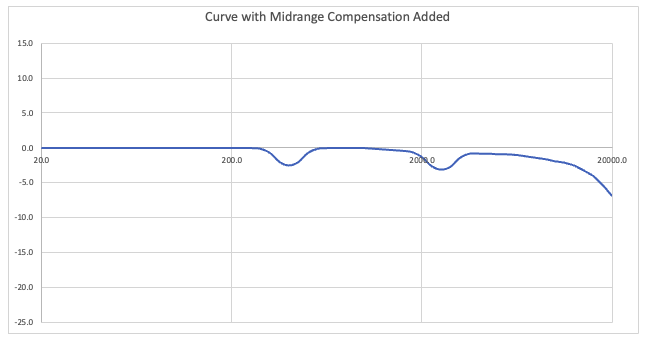x
Dirac Live applies some phase corrections and although I doubt the accuracy of these, Audyssey cannot do that at all. All its filters are in the frequency domain. Also Dirac Live can crossover subwoofer at any frequency (unlike the fixed frequencies of Audyssey) and has higher speaker distance (delay) level limits than Audyssey for the same receiver (I heard that from a trusted friend who tested both but did not yet confirm myself!)
Coming from you I am a little surprised and had little doubt you know your stuff. However, what you stated about Audyssey filters seem like something people have been repeating on forums many times and I never know if they were false, true, or to a point..
Since I was able to get smoother 15 to 200 Hz combined results of two towers and subwoofers than DL could even with BC, Audyssey must be doing something right in that range, and in some ways. So I ask Audyssey about what you said in this post, and their response was that there were a lot of misinformation out there. According to them, Audyssey filters do not alter the phase, thus no optimization is needed, and that Audyssey time-aligned all speakers, and the filters are in the time domain.
Unless we don't believe what Audyssey is telling us, we should do our part not to perpetuate misinformation, not that I am a fan and I don't use it anymore, but just want to be fair. Regarding the fixed crossover frequencies of Audyssey, I don't like that either but I seem to remember that their response to that was, they don't set crossovers, Denon/Marantz do (same for the large vs small thing), but that's by memory, need to do a search to confirm that. Just did, first Google search result is from 2011:
Audyssey LabsMarch 25, 2011 08:43
MultEQ does not set crossovers. It simply finds the roll off that each speaker has in the room and where it's placed. The crossovers are set by the AVR maker. There is a benefit in raising the crossover up: the MultEQ filters in the subwoofer channel have 8x more resolution and so will produce a smoother bass response. I would recommend using 80 Hz.
So, I agree with you on this, though again, want to fair that Audyssey does not have full control of how everything is done. I can see that DL may begin to lose some control too not that they are much more widely adopted by AVR/AVP manufacturers, big dogs like Masimo are going to exert influence, for various reasons. What Phil Jones just alluded to about adding bass management to the regular license is a sign, albeit a much welcome one.
By the way, while searching for crossover frequency, I came across the following response to a question about time domain filters as well, also from 2011:
Audyssey LabsAugust 10, 2011 14:48
Hi Jonas,
You are right that there is no way to control the sound after it leaves the speaker. However, we can measure the effects of the reflections that arrive after the direct sound by looking at the time domain response. It has a certain pattern to it that will depend on the time of arrival of those reflections. Based on that pattern and the similarity of patterns across multiple measured locations we can identify the problems caused by reflections. Then, a filter is created to invert those problems as best as possible.
The key is to not think of the filtering in the time domain. It's not like a graphic equalizer that can only raise or lower the amplitude at certain frequencies. Our filters are in the form of impulse responses that operate on the audio signal through an operation called convolution. As such, they are affecting the signal in each channel in the time domain--hence the name. An additional benefit of such filters (also called FIR) is that they operate in the time-frequency domain as well. That means they can be used effectively to lower the ring down time of room modes in the low frequency range.
I can see why users such as me and
@Steve Dallas could get comparable results to Dirac Live, yes, even vs DLBC though I would definitely give DLBC the edge overall, cost more though obviously.





